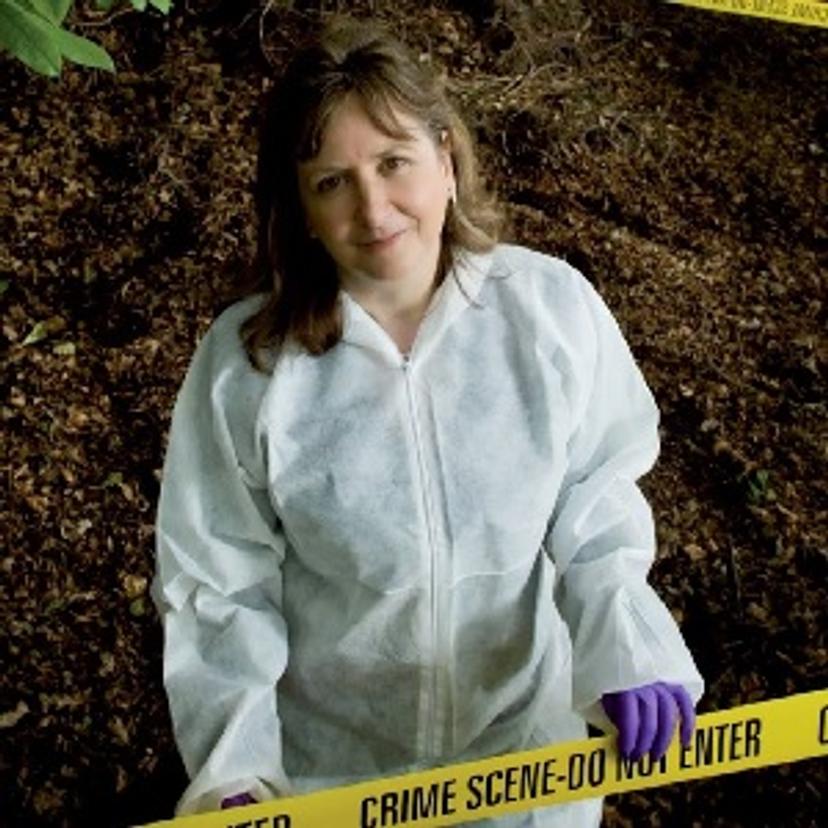My Lab Essentials: Forensic Soil Investigation − Mapping Criminal Influences
Bringing soil fingerprinting into the court room
30 Sept 2015

Prof. Lorna Dawson, Principal Soil Scientist in the Environmental and Biochemical Sciences group and Head of Forensic Soil Science, James Hutton Institute, UK
For Professor Lorna Dawson, Principal Soil Scientist in the Environmental and Biochemical Sciences group and Head of Forensic Soil Science, at the James Hutton Institute, UK, the scene of the crime encompasses more than for most people. Prof. Dawson has pioneered the forensic study of soil, using both organic and inorganic 'fingerprints' to identify with surprising accuracy the origin of the sample, linking suspects with crime scenes. In the latest in our Lab Essentials series, Prof. Dawson explains what features she looks for in a sample, and reveals the potential for microbial DNA to bring soil data to UK courts.
"It's not just dirt," explained Prof. Dawson. From Roman times to Sherlock Holmes, soil has been used in crime scene investigation. However, modern science has struggled to catch up, and there is need for "continuity, integrity, robust analytical approaches, and reproducibility" more than ever. "Current research is to develop increasingly faster, cheaper and more robust techniques to help law enforcement in searches, crime scene comparisons, evaluation and presentation in court," Prof. Dawson continued.
A wealth of information
There are several aspects that can be studied in soil, from "inorganic analysis of minerals and elements, to organic analysis, studying hydrocarbon, alcohol, ketone and pollen content, for example. I also examine the soil sample for seeds, plant fragments, hairs, and flakes of paint." Finally, the DNA of bacteria, fungi, nematodes and any other organism that calls the soil sample ‘home’ are analyzed.
Together with the organic characteristics, Prof. Dawson can map "the plant or fungal species that grow and have grown there, and reveal the ecological habitat." With the inorganic data, she can identify "which type of rock the soil has formed from, or if it is near an area of pollution or agricultural intensity. Man's influence can also be ascertained from the soil fingerprints, using compounds such as car residues or PAHs."
Prof. Dawson's work has given her a great appreciation for the world she lives in. "Soil is vital to our very existence – it gives us good food, clean air, fresh water, a rich biodiversity below and above ground, and a cultural base to support our heritage. It's not just helping us investigate crime. As the population of the world increases, we must protect this non renewable resource," she explained.
The future of forensic soil science
In relation to soil DNA profiles, "before being used in the UK courts, however, further rigorous testing is required," explained Prof. Dawson. In particular, the use of microbial DNA has "great potential" to allow scientists to work quickly with trace amounts of sample using "technology that forensics labs and law courts are already used to". However, the effect of time after sample collection and potentially even the time of year are as yet unknown – "we should proceed with extreme caution", counseled Prof. Dawson on the regular use of soil DNA as evidence.
Eventually, Prof. Dawson hopes "to apply the same approach that we do in serious crimes, such as murder, to volume crime, like theft." With the development of faster, smaller and cheaper analyses, better understanding of the information that soil holds, and greater interdisciplinary collaboration, she believes this hope will become a reality: "sometimes the greatest advances occur when disciplines cross".
Here are Prof. Dawson's Lab Essentials, the products and technologies she couldn’t work without:
ChargeSwitch® Direct gDNA Purification Kit and Pro Plasmid Miniprep Kit from Life Technologies
Fragment Analysis Kits from Life Technologies
3130xl Genetic Analyzer from Applied Biosystems
Hhal enzymes from Promega
Pipettes from Gilson and pipette tips from Starlab
5804 R efrigerated centrifuge from Eppendorf
Qubit 2.0 from Life Technologies
Agencourt Ampure XP kit from Beckman Coulter
